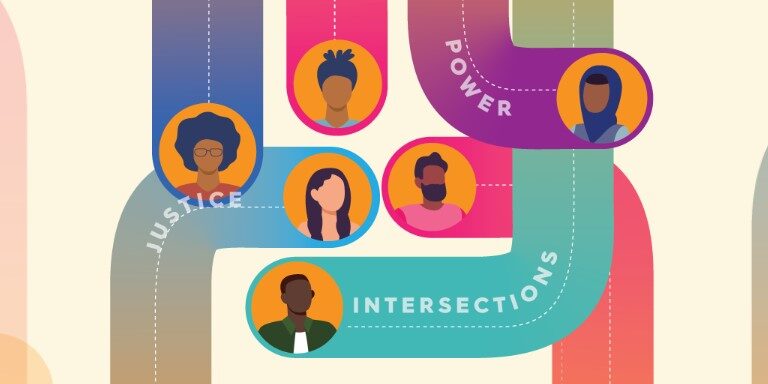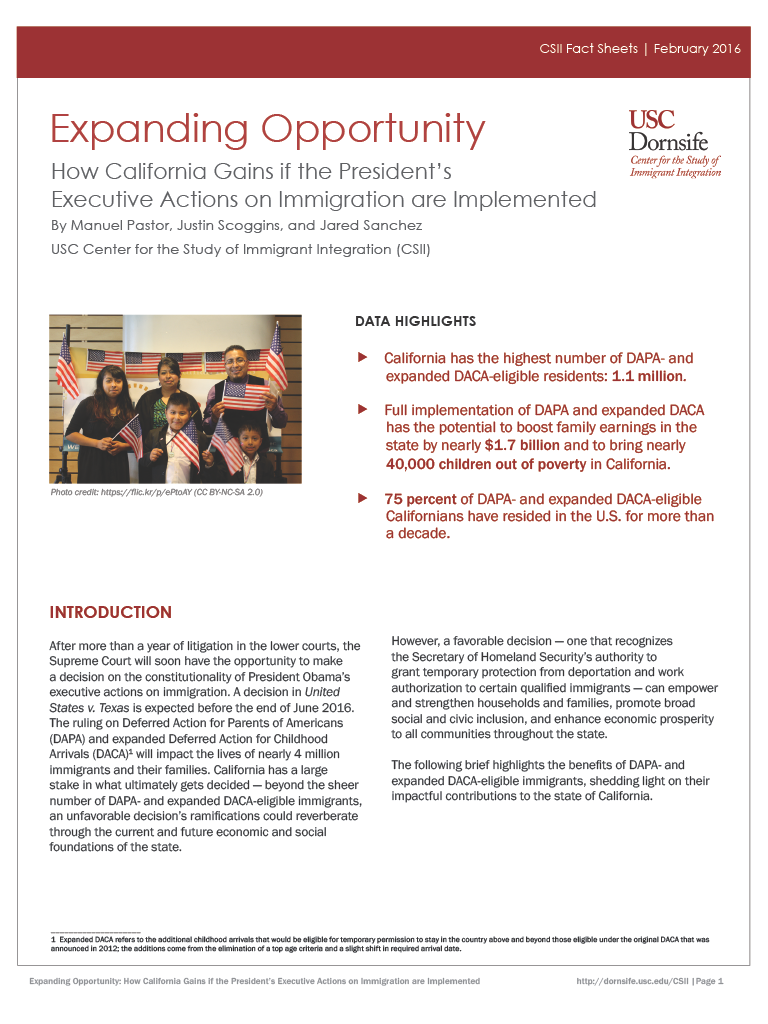
February 23, 2016
By Manuel Pastor, Justin Scoggins, and Jared Sanchez
Please note: reports dated earlier than June 2020 were published under our previous names: the USC Program for Environmental and Regional Equity (PERE) or the USC Center for the Study of Immigrant Integration (CSII).
After more than a year of litigation in the lower courts, the Supreme Court will soon have the opportunity to make a decision on the constitutionality of President Obama’s executive actions on immigration.
A decision in United States v. Texas is expected before the end of June 2016. The ruling on Deferred Action for Parents of Americans (DAPA) and expanded Deferred Action for Childhood Arrivals (DACA) will impact the lives of nearly 4 million immigrants and their families.
California has a large stake in what ultimately gets decided—beyond the sheer number of DAPA- and expanded DACA-eligible immigrants, an unfavorable decision’s ramifications could reverberate through the current and future economic and social foundations of the state.
A favorable decision however, one that recognizes the Secretary of Homeland Security’s authority to grant temporary protection from deportation and work authorization to certain qualified immigrants, can empower and strengthen households and families, promote broad social and civic inclusion, and enhance economic prosperity to all communities throughout the state.
These fact sheets highlight the benefits of DAPA- and expanded DACA-eligible immigrants, shedding light on their impactful contributions to the state of California.
DATA HIGHLIGHTS INCLUDE:
- California has the highest number of DAPA- and expanded DACA-eligible residents: 1.1 million.
- Full implementation of DAPA and expanded DACA has the potential to boost family earnings in the state by nearly $1.7 billion and to bring nearly 40,000 children out of poverty in California.
- 75 percent of DAPA- and expanded DACA-eligible Californians have resided in the U.S. for more than a decade.
Download fact sheets
Data Visuals
To save images: Click and hold (Mac) or right mouse click the image (PC). Select “Save this image as” and then navigate to where you want to save the image file.

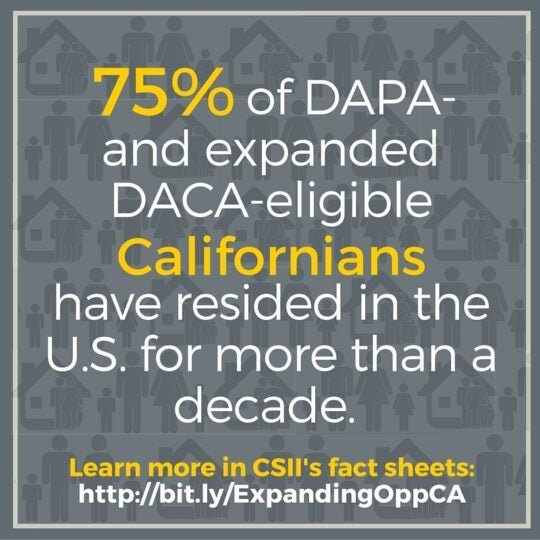
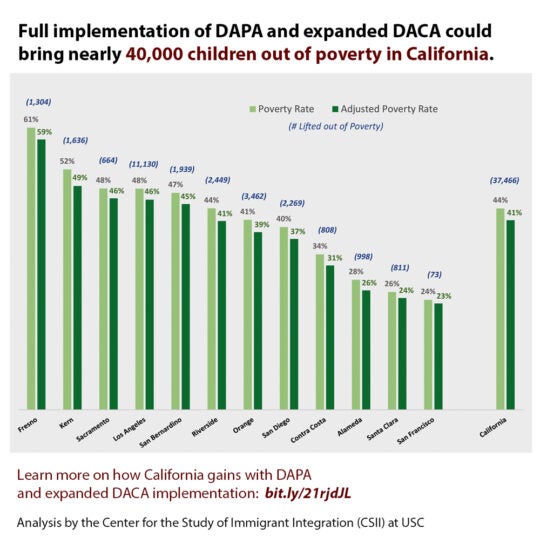
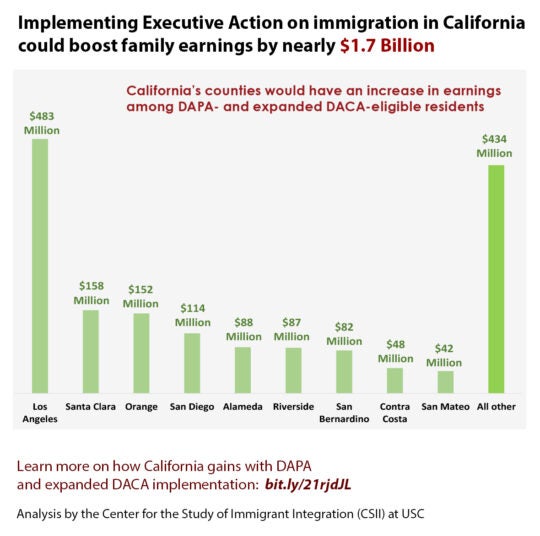
Related links
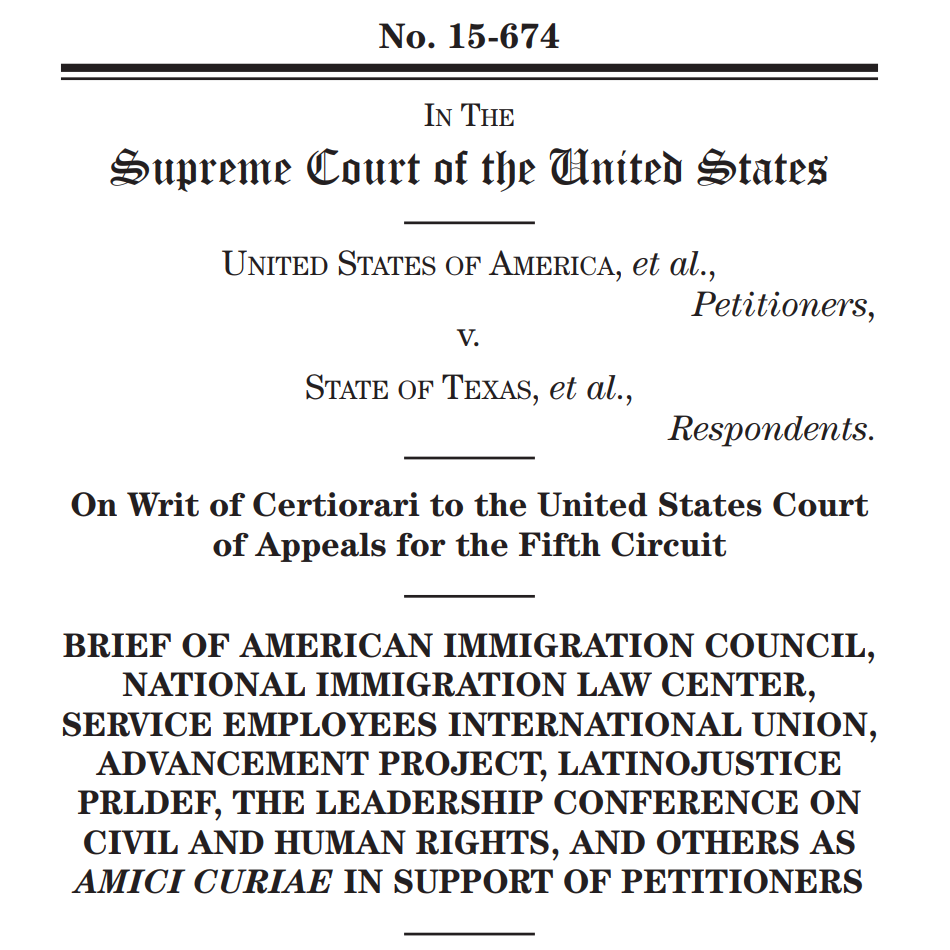 United States v. State of Texas – Supreme Court
United States v. State of Texas – Supreme Court
March 8, 2016
A coalition of 326 immigration, civil rights, labor, and social service groups filed an amicus (friend-of-the-court) brief with the U.S. Supreme Court in United States v. Texas, urging the court to lift the injunction that blocked the executive actions on immigration that President Obama announced in November 2014. The “Expanding Opportunity: How California Gains if the President’s Executive Actions on Immigration are Implemented” fact sheets are cited on page 8.
